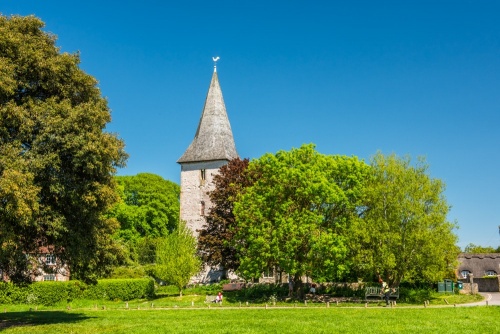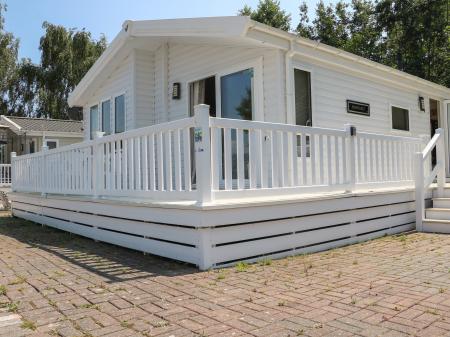
He met a group of Irish monks under the leadership of Dicul at Bosham. That meeting is recorded by the Venerable Bede in his 8th-century work, 'History of the English Church and People'.
The first building we know of for certain dates to the 10th century. Traces of that Saxon building still remain in the lower courses of the stonework in the west tower.
The tower was standing when Harold, Earl of Wessex and soon to be king of England, rode here with his men in 1064 prior to his ill-fated voyage to Normandy. The visit is depicted in the Bayeux Tapestry, which clearly shows the chancel arch of Bosham church, perhaps the same arch that you can see today.

King Canute's Daughter
Set into the floor before the chancel arch is a modern memorial to the 8-year-old daughter of King Canute, who tragically drowned at Bosham sometime around 1020. Bosham church is the traditional burial place of the little girl, who is said to have drowned in the nearby river. Now, such tales are often thought to be little more than romantic local tales, but in this case, the story may have some truth in it.
In 1865 a stone coffin was discovered, within which was a small skeleton of the correct age, and dating to the early 11th century. Of course, we cannot be sure it was the skeleton of the princess, but the evidence does suggest some truth in the old tale. Enough truth that the skeleton was reburied with honour where it now lies by the chancel arch. Certainly, Canute himself has ties to Bosham, for it was here that he famously bid the tide to cease.
There are many other features of historical interest within the church. At the west end of the nave is a marvellous 12th-century font, set upon four slender pillars of Purbeck marble. In the north aisle is a pillar piscina supported on a hollow central column, with the drain running down its centre.

On the north side of the chancel is a tomb niche, surmounted by a canopy. Within the niche is an effigy of a small child upon a table tomb. Both tomb and effigy are 13th/14th century but were probably not sculpted to go together.
Opposite the tomb is a large parish chest, dated to the 13th century. Near the south door is another, larger tomb niche, and near this are stairs to a large 14th-century crypt, possibly used as a charnel house to store bones of monks.
From the church, a short stroll takes you to the shore of Bosham harbour, where you can walk along the shore when the tide is out.









 We've 'tagged' this attraction information to help you find related historic attractions and learn more about major time periods mentioned.
We've 'tagged' this attraction information to help you find related historic attractions and learn more about major time periods mentioned.


